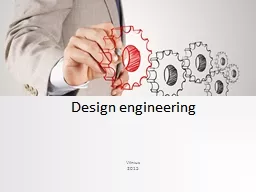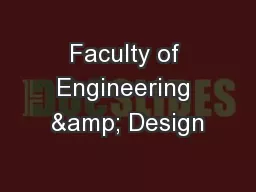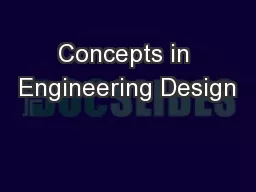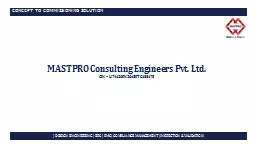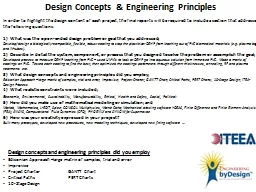PPT-Design engineering
Author : myesha-ticknor | Published Date : 2016-06-22
Vilnius 2015 The goal of design engineering is to produce a model that exhibits firmness a program should not have bugs that inhibit its function c ommodity a
Presentation Embed Code
Download Presentation
Download Presentation The PPT/PDF document "Design engineering" is the property of its rightful owner. Permission is granted to download and print the materials on this website for personal, non-commercial use only, and to display it on your personal computer provided you do not modify the materials and that you retain all copyright notices contained in the materials. By downloading content from our website, you accept the terms of this agreement.
Design engineering: Transcript
Download Rules Of Document
"Design engineering"The content belongs to its owner. You may download and print it for personal use, without modification, and keep all copyright notices. By downloading, you agree to these terms.
Related Documents

